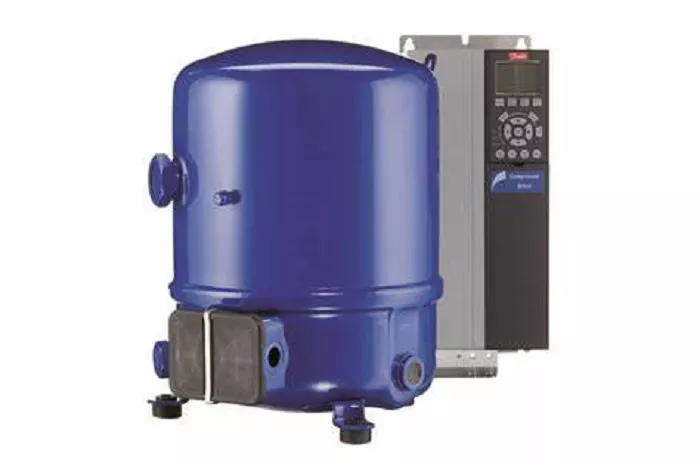The Inverter Linear Compressor represents a significant advancement in refrigeration and air conditioning technology. Unlike traditional compressors, which rely on rotary or reciprocating mechanisms, the inverter linear compressor operates with a linear motor, improving efficiency, noise reduction, and durability.
What is an Inverter Linear Compressor?
An inverter linear compressor is a type of hermetic compressor that uses a linear motor to drive the piston in a straight-line (back-and-forth) motion, rather than a rotary motion. The term “inverter” refers to the variable-speed control mechanism that adjusts cooling capacity based on demand, enhancing energy efficiency.
Key Components
- Linear Motor:Converts electrical energy into linear motion.
- Piston & Cylinder Assembly:Compresses refrigerant gas without crankshafts.
- Resonant Spring System:Helps maintain smooth piston movement.
- Inverter Drive:Controls motor speed for precise cooling adjustment.
Working Principle of an Inverter Linear Compressor
The operation of an inverter linear compressor involves electromagnetic actuation and resonance-based motion, differing significantly from conventional compressors.
Step-by-Step Operation
Power Supply & Inverter Control
- The inverter circuit adjusts the frequency and voltage supplied to the linear motor.
- This allows variable-speed operation based on cooling demand.
Linear Motor Activation
- The motor consists of a moving coil (armature) and permanent magnets.
- When current flows through the coil, it generates a magnetic field, interacting with the permanent magnets to produce linear motion.
Piston Movement & Compression
- The piston moves back and forth in a straight line, compressing refrigerant gas.
- No rotary components (e.g., crankshaft) are needed, reducing mechanical losses.
Resonance & Energy Recovery
- A spring system helps the piston move efficiently by storing and releasing kinetic energy.
- This resonant operation minimizes energy waste.
Refrigerant Discharge
- Compressed refrigerant is discharged into the condenser, completing the cooling cycle.
Advantages of Inverter Linear Compressors
Compared to traditional compressors, inverter linear compressors offer superior efficiency, reliability, and performance.
Energy Efficiency
- Variable-speed operation reduces power consumption by 30-50% compared to fixed-speed compressors.
- The linear motion eliminates mechanical friction from crankshafts and connecting rods.
- Resonant spring system recovers energy, further improving efficiency.
Reduced Noise & Vibration
- Fewer moving parts result in lower mechanical noise.
- The absence of rotary motion eliminates vibration caused by unbalanced rotating masses.
Enhanced Durability & Reliability
- No oil lubrication is required (in some designs), reducing wear.
- Fewer mechanical parts mean fewer failure points.
- Precision control prevents overheating and overloading.
Precise Temperature Control
- The inverter drive allows incremental cooling adjustments, maintaining stable temperatures.
- Eliminates the on/off cycling of conventional compressors, improving food preservation in refrigerators.
Applications of Inverter Linear Compressors
Household Refrigerators
- LG’s Linear Compressor (used in premium refrigerators) is a well-known example.
- Provides consistent cooling, longer food freshness, and energy savings.
Commercial Refrigeration
- Used in display freezers, medical refrigerators, and beverage coolers.
- Ideal for low-noise environments (e.g., hospitals, laboratories).
Air Conditioning Systems
- Some high-efficiency inverter ACs use linear compressors for better performance.
- Reduces power surges during startup.
utomotive & Aerospace Cooling
- Emerging applications in electric vehicle (EV) cooling systems.
Comparison
| Feature | Inverter Linear Compressor | Traditional Reciprocating Compressor | Rotary Compressor |
|---|---|---|---|
| Mechanism | Linear motor-driven piston | Crankshaft-driven piston | Rotary vane or scroll |
| Efficiency | Very high (30-50% savings) | Moderate | High (but fixed-speed) |
| Noise Level | Very low | Moderate to high | Low to moderate |
| Maintenance | Minimal (fewer moving parts) | Requires lubrication & part replacement | Moderate maintenance |
| Cost | Higher initial cost | Lower cost | Mid-range cost |
| Temperature Control | Precise (variable speed) | On/Off cycling | Limited adjustment |
Challenges & Limitations
Higher Manufacturing Cost
- Precision components (e.g., linear motor, resonant springs) increase production costs.
Complex Control System
- Requires advanced inverter electronics for smooth operation.
Limited High-Capacity Applications
- Currently more suited for small to medium cooling loads (e.g., refrigerators, small ACs).
Future Trends & Innovations
- Wider adoption in HVAC systems for better energy savings.
- Integration with smart cooling systems (IoT-enabled compressors).
- Use of advanced materials (e.g., high-strength magnets) to improve efficiency.
Conclusion
The inverter linear compressor is a groundbreaking technology that offers superior efficiency, quiet operation, and long-term reliability compared to traditional compressors. While its higher initial cost may be a barrier, the long-term energy savings and performance benefits make it an ideal choice for modern refrigeration and cooling systems.

